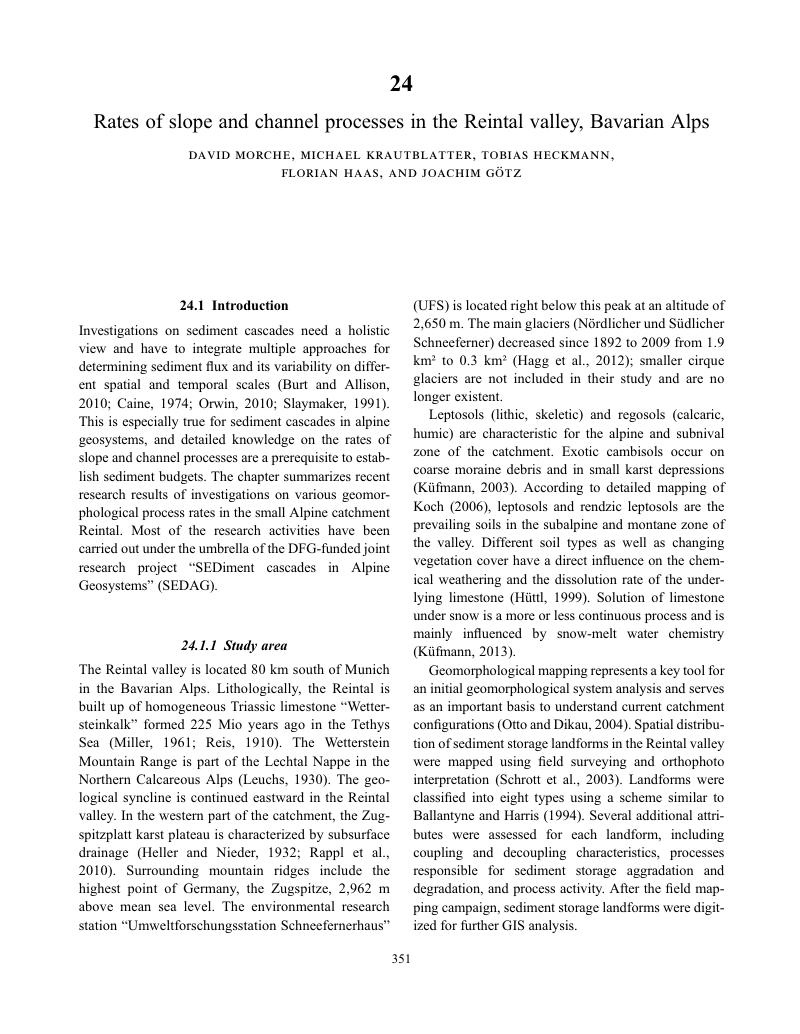Book contents
- Source-to-Sink Fluxes in Undisturbed Cold Environments
- Source-to-Sink Fluxes in Undisturbed Cold Environments
- Copyright page
- Contents
- Contributors
- Preface
- Part I Solute and sedimentary fluxes and budgets in changing cold climate environments
- Part II Climate change in cold environments and general implications for contemporary solute and sedimentary fluxes
- Part III Solute and sedimentary fluxes in subarctic and Arctic environments
- Part IV Solute and sedimentary fluxes in sub-Antarctic and Antarctic environments
- Part V Solute and sedimentary fluxes in alpine/mountain environments
- 20 Chemical denudation in partly glacierized mountain catchments of the fjord landscape in western Norway: contemporary rates, environmental controls, and possible effects of climate change
- 21 Sediment delivery from headwater slope systems and relief development in steep mountain valleys in western Norway
- 22 Suspended sediment dynamics in the proglacial zone of the rapidly retreating Castle Creek Glacier, British Columbia, Canada
- 23 Sedimentary fluxes in Himalaya
- 24 Rates of slope and channel processes in the Reintal valley, Bavarian Alps
- 25 Comparative analysis of sediment routing in two different alpine catchments
- 26 Controls and variability of solute and sedimentary fluxes in alpine/mountain environments
- Part VI Quantitative analysis of solute and sedimentary fluxes in cold climate environments
- Index
- References
24 - Rates of slope and channel processes in the Reintal valley, Bavarian Alps
from Part V - Solute and sedimentary fluxes in alpine/mountain environments
Published online by Cambridge University Press: 05 July 2016
- Source-to-Sink Fluxes in Undisturbed Cold Environments
- Source-to-Sink Fluxes in Undisturbed Cold Environments
- Copyright page
- Contents
- Contributors
- Preface
- Part I Solute and sedimentary fluxes and budgets in changing cold climate environments
- Part II Climate change in cold environments and general implications for contemporary solute and sedimentary fluxes
- Part III Solute and sedimentary fluxes in subarctic and Arctic environments
- Part IV Solute and sedimentary fluxes in sub-Antarctic and Antarctic environments
- Part V Solute and sedimentary fluxes in alpine/mountain environments
- 20 Chemical denudation in partly glacierized mountain catchments of the fjord landscape in western Norway: contemporary rates, environmental controls, and possible effects of climate change
- 21 Sediment delivery from headwater slope systems and relief development in steep mountain valleys in western Norway
- 22 Suspended sediment dynamics in the proglacial zone of the rapidly retreating Castle Creek Glacier, British Columbia, Canada
- 23 Sedimentary fluxes in Himalaya
- 24 Rates of slope and channel processes in the Reintal valley, Bavarian Alps
- 25 Comparative analysis of sediment routing in two different alpine catchments
- 26 Controls and variability of solute and sedimentary fluxes in alpine/mountain environments
- Part VI Quantitative analysis of solute and sedimentary fluxes in cold climate environments
- Index
- References
Summary

- Type
- Chapter
- Information
- Source-to-Sink Fluxes in Undisturbed Cold Environments , pp. 351 - 363Publisher: Cambridge University PressPrint publication year: 2016



